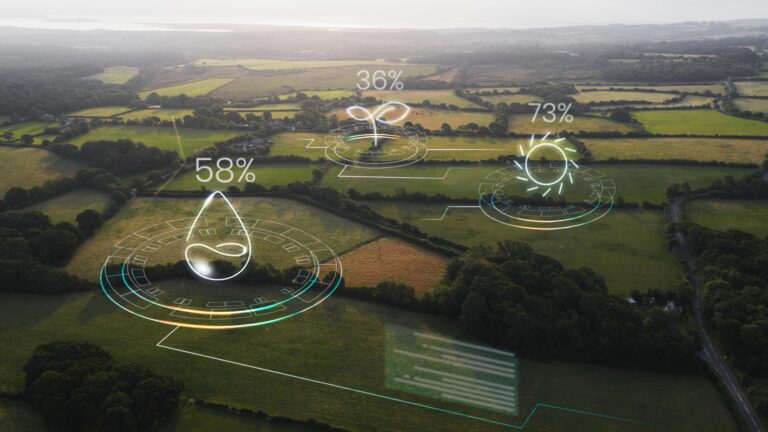Revolutionizing IT infrastructure: Harnessing Edge Computing and Blockchain integration for secure, decentralized data processing and storage.
Edge computing and Blockchain integration is an emerging trend that combines the benefits of both technologies to create more robust and efficient systems. Edge Computing involves a decentralized IT structure where data from clients is processed at the network’s periphery, as near to the source as feasible. This can include devices like sensors, IoT devices, and local servers rather than relying on a centralized cloud server. Blockchain is a technology for securely recording information, which is designed to prevent alterations, unauthorized access, or manipulation of the system. It involves a decentralized ledger that replicates and disperses transactions among a network of participating computers.
Edge Computing represents a paradigm shift from traditional cloud computing models. It involves processing data closer to the source, reducing latency and enhancing real-time processing capabilities. By distributing computational tasks to the edge of the network, Edge Computing minimizes the strain on centralized servers and enables faster decision-making in critical applications. Also, sensitive data can be processed locally, enhancing privacy and security. The widespread adoption of Internet of Things (IoT) devices have driven the demand for Edge Computing. These devices produce extensive data that can be locally processed, alleviating the strain on centralized servers and networks. From sensors to intelligent appliances, edge devices are increasingly becoming essential elements of decentralized computing frameworks. Initially created to ensure secure and transparent transactions in the realms of cryptocurrencies, blockchain has expanded its applications beyond the financial sector. The decentralized and resistant-to-tampering characteristics of blockchain positions it as an excellent choice for bolstering the security of Edge Computing. Cryptographic techniques are employed to guarantee data integrity, thereby diminishing the likelihood of unauthorized access or manipulation. Smart contracts, which are contracts with terms written directly into code, boost automation and
trust in edge computing settings.

Fig 1. Edge Computing Architecture
While conventional cloud solutions encounter issues with centralization and become single points of failure, Edge Computing, coupled with Blockchain, disperses data processing tasks among a network of nodes. This decentralization not only enhances security but also advances scalability and resource efficiency. Decentralization stands as the fundamental characteristic of both blockchain and edge computing technologies. In a decentralized blockchain or edge computing system, a singular central authority lacks control over the network. Decision-making authority is distributed among a network of nodes, collectively validating and concurring on transactions to be incorporated into the blockchain. This decentralized framework fosters transparency, trust, and security. Moreover, it mitigates the reliance on a solitary point of failure, diminishing the potential risks associated with data manipulation.

The cryptographic principles embedded in Blockchain play a pivotal role in elevating data privacy standards. This approach empowers users by allowing them to retain control over their data, with access permissions securely orchestrated through decentralized consensus mechanisms. Simultaneously, Edge Computing reinforces this privacy paradigm by locally processing sensitive data. This strategy minimizes the necessity for data to traverse extensive distances, thereby reducing exposure to potential security threats and enhancing overall data protection.
In the manufacturing industry, integrating edge computing and Blockchain enhances efficiency and security. Edge devices streamline real-time data processing, while Blockchain ensures tamper-resistant and transparent transaction records. This synergy optimizes supply chain management, accelerates production processes, and fortifies data integrity, fostering a resilient and agile manufacturing ecosystem. Similarly, in e-commerce, it revolutionizes transaction efficiency and security, ensuring transparent transactions, streamlined order fulfillment, and fortified overall operational reliability. Also, leveraging edge computing involves enhancing network efficiency through performance measurement across the internet. By employing analytics, it identifies the most dependable, low-latency network path for individual user traffic, effectively guiding traffic for optimal time-sensitive performance. Additionally, edge computing integrates and analyzes data from onsite cameras, safety devices, and sensors to enable businesses to monitor workplace conditions and ensure compliance with safety protocols, particularly in remote or high-risk environments like construction sites or oil rigs. Retail enterprises generate extensive data from surveillance, stock tracking, and real-time business information. Edge computing proves valuable in analyzing this diverse data, identifying opportunities like strategic product placements or campaigns, forecasting sales, and optimizing vendor orders. Given the diverse local environments of retail businesses, employing edge computing enables efficient local processing at each store. Autonomous vehicles represent the contemporary convergence of technology and the transportation industry. Self-driving vehicles demand and generate between 5 TB to 20 TB daily, collecting data on location, speed, vehicle status, road, and traffic conditions. Real-time aggregation and analysis, while the vehicle is in motion, necessitate substantial onboard computing, essentially turning each autonomous vehicle into an “edge”. Furthermore, this data aids authorities and businesses in dynamically managing vehicle fleets based on real-time ground conditions.

Fig.3.Integration between Edge Computing and Blockchain
Acknowledging the integration of edge computing and blockchain, it’s crucial to address challenges like interoperability issues, scalability concerns, and regulatory considerations. These hurdles can impede seamless adoption across industries. However, ongoing research and development endeavors aim to surmount these obstacles. Collaborative initiatives seek to enhance interoperability, devise scalable solutions, and navigate regulatory landscapes. As these challenges are tackled head-on, the future evolution of this transformative technology holds promise for creating a secure, decentralized, and highly efficient computing environment with far-reaching implications across various sectors. Edge computing is undergoing continual advancement, leveraging new technologies to elevate its capabilities. A notable trend on the horizon is the widespread availability of edge services globally by 2028, indicating a shift from its current situation-specific applications to a more ubiquitous presence. The proliferation of specialized computing, storage, and network products tailored for edge computing underscores this evolution. Collaborations between major players in the IT industry are enhancing connectivity at the edge. The influence of wireless technologies like 5G and Wi-Fi 6 is set to revolutionize edge deployments, enabling unexplored possibilities such as improved vehicle autonomy and seamless workload migrations. As IoT technologies mature, they will play a pivotal role in shaping the future of edge computing. Additionally, the emergence of innovative solutions like micro modular data centers (MMDCs) promises to bring complete data centers closer to the data source, further optimizing computing proximity without compromising edge functionality.
From the information mentioned in the above sections, we can see that the integration of Edge Computing and blockchain is poised to reshape the future of IT infrastructure profoundly. This synergy promises enhanced security, decentralization, and efficiency, marking a revolutionary shift in data processing and storage. Key takeaways include the decentralized nature of Blockchain bolstering security in edge computing and the transformative impact on industries like manufacturing and e-commerce. As we envision a future where these technologies evolve and intertwine, it becomes paramount to emphasize the ongoing need for exploration and collaboration. Continued efforts will unlock the full potential of this groundbreaking integration, fostering innovation and resilience in the ever-evolving landscape of IT infrastructure.








